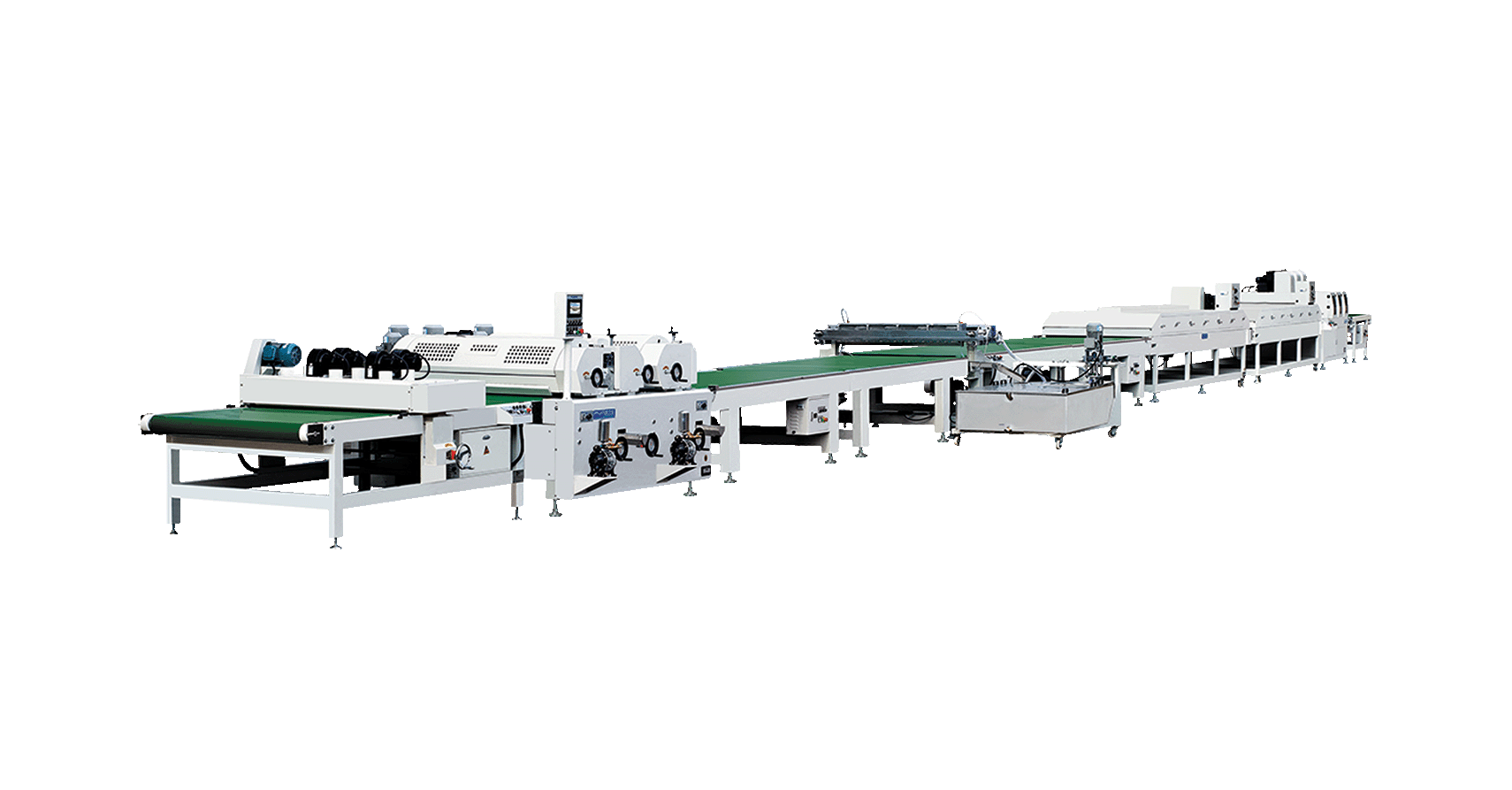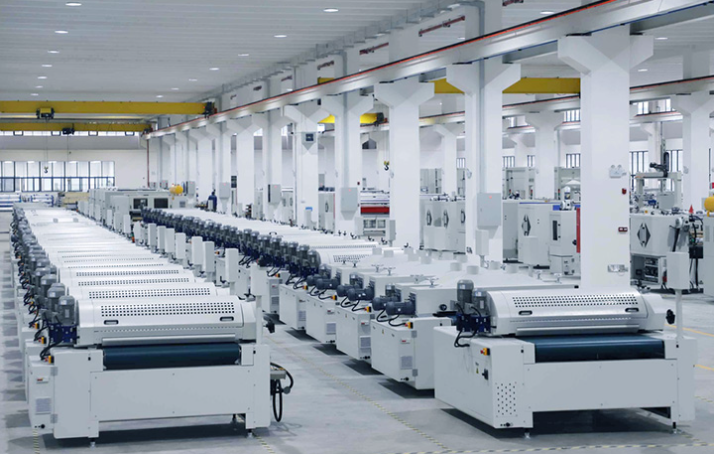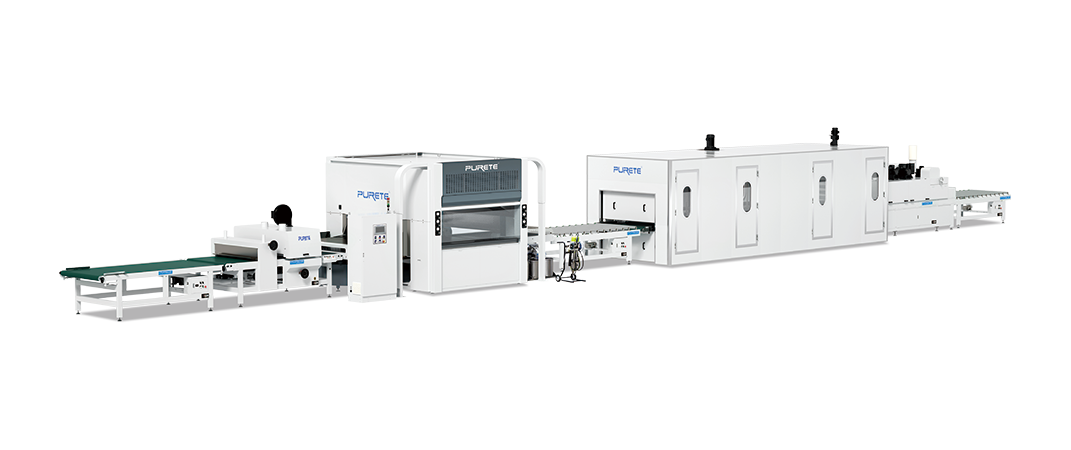How Spray Painting Machines Drive the Industry 4.0 Revolution in Furniture Manufacturing
 April 21, 2025
April 21, 2025 Hits:1201second
Hits:1201secondThe concept of Industry 4.0 refers to the fourth industrial revolution, characterized by the integration of digital technologies, automation, and data exchange into manufacturing processes. In the context of furniture manufacturing, Industry 4.0 is reshaping traditional production lines by introducing advanced technologies that increase efficiency, improve product quality, and enable greater customization. One such technology that is playing a significant role in this transformation is the spray painting machine.
Spray painting machines, particularly those integrated with automation, robotics, and IoT (Internet of Things), are not just enhancing the appearance of furniture but also driving the shift toward smart, data-driven production processes.
1. Automation and Efficiency
One of the key principles of Industry 4.0 is the automation of manufacturing processes to increase productivity and reduce manual labor. Spray painting machines equipped with automation technologies are crucial in achieving these goals in furniture production.
Robotic Spray Systems: The integration of robotic arms in spray painting systems allows for precise and consistent application of paint, ensuring that each piece of furniture is coated uniformly. Robots can perform complex tasks such as spraying multiple coats or adjusting spray angles based on the shape of the furniture, which significantly improves the accuracy and speed of the process.
Reduced Labor Costs: Automated spray painting machines eliminate the need for manual labor in applying finishes, which can be labor-intensive and time-consuming. Robots can work continuously and handle repetitive tasks without fatigue, reducing labor costs and allowing human workers to focus on more value-added tasks.
Optimized Paint Usage: Automated systems can precisely control the amount of paint being applied, minimizing overspray and ensuring that the right quantity of paint is used for each piece. This not only improves efficiency but also leads to cost savings on materials.
Through automation, spray painting machines enable faster production cycles, allowing furniture manufacturers to produce larger quantities of finished products in less time.
2. Data Collection and Real-Time Monitoring
Another cornerstone of Industry 4.0 is the use of data to enhance decision-making and optimize manufacturing processes. Spray painting machines integrated with IoT technology allow for real-time data collection and monitoring throughout the painting process. This provides manufacturers with actionable insights to improve efficiency, quality, and maintenance practices.
Real-Time Process Monitoring: Modern spray painting machines are equipped with sensors that collect data on variables such as spray pressure, paint viscosity, temperature, and humidity. This data is transmitted to a central control system, where operators can monitor the conditions of the process in real-time and make adjustments if necessary to ensure optimal performance.
Predictive Maintenance: IoT-enabled spray painting machines can also predict when maintenance is needed by monitoring machine performance and detecting early signs of wear and tear. By analyzing historical data, manufacturers can schedule predictive maintenance before a failure occurs, minimizing downtime and reducing costly repairs.
Performance Analytics: The data collected from spray painting machines can be used to generate detailed performance reports that provide insights into efficiency, paint consumption, and product quality. These analytics help manufacturers identify areas of improvement and make data-driven decisions to optimize the production line.
With the power of big data and real-time analytics, spray painting machines help manufacturers increase operational efficiency while maintaining high-quality standards.
3. Customization and Flexibility
In today's furniture market, consumers demand more personalized products. They want furniture that suits their individual tastes and needs, which means that manufacturers must be able to offer a high degree of customization while still maintaining efficiency. Spray painting machines integrated with advanced technologies help meet this demand for customization.
Flexible Painting Programs: Spray painting machines can be programmed to handle different colors, finishes, and textures, making it easy to produce a wide variety of designs and styles. Manufacturers can quickly switch between different paint formulations and settings to accommodate customer preferences, all while maintaining the same level of precision and consistency.
Mass Customization: Advanced spray painting systems allow manufacturers to produce small batches of customized furniture at the same speed and quality as mass-produced items. This is a significant advantage in the modern market, where demand for unique, tailor-made products is on the rise.
Integration with CAD/CAM Systems: Modern spray painting machines can be integrated with Computer-Aided Design (CAD) and Computer-Aided Manufacturing (CAM) systems, allowing for seamless transitions from design to production. This integration ensures that the spray painting process aligns perfectly with the specific requirements of each piece of furniture, whether it’s a unique color or a special texture.
Through these capabilities, spray painting machines enable mass customization, where each piece of furniture can be customized without compromising on efficiency or quality.
4. Quality Control and Consistency
In traditional furniture manufacturing, achieving consistent coating quality across large production runs can be challenging. However, spray painting machines equipped with advanced technologies help ensure consistent paint finishes and eliminate human errors in the painting process.
Automated Quality Control: Modern spray painting machines often include automated quality control systems that use sensors and cameras to inspect the painted surface for defects such as uneven coating, drips, or bubbles. If any imperfections are detected, the machine can automatically adjust settings or flag the piece for rework, ensuring that only high-quality products pass through the production line.
Uniform Coating Thickness: One of the challenges in spray painting is ensuring that each piece of furniture receives a uniform coating. Automated spray painting systems use advanced algorithms to calculate the optimal spray pattern, pressure, and distance to achieve a consistent finish, regardless of the size or shape of the item being painted.
High-Quality Finishes: With precise control over the application process, spray painting machines ensure that the furniture not only looks visually appealing but also has the desired durability and scratch resistance. This consistency in quality contributes to increased customer satisfaction and brand reputation.
5. Sustainability and Waste Reduction
Sustainability is a growing concern in the furniture manufacturing industry, and spray painting machines contribute to this effort by minimizing waste and reducing the environmental impact of the production process.
Efficient Paint Usage: As mentioned earlier, automated spray painting systems help to optimize paint usage, reducing overspray and waste. This is crucial for both cost savings and environmental sustainability.
Energy-Efficient Operations: Many modern spray painting machines are designed to be energy-efficient, using low-energy UV curing or high-efficiency motors to minimize energy consumption during the painting process.
Reduced VOC Emissions: New spray painting systems are increasingly designed to use low-VOC (volatile organic compound) paints and coatings, which have less environmental impact and contribute to healthier working environments.
Spray painting machines are a vital component of the Industry 4.0 revolution in the furniture manufacturing sector. By integrating automation, IoT technology, predictive maintenance, and data analytics, these machines help manufacturers improve efficiency, enhance product quality, enable mass customization, and reduce waste. As the demand for personalized and high-quality furniture continues to rise, spray painting machines will play an increasingly important role in enabling furniture manufacturers to meet these challenges while driving the transition to smart, data-driven production processes.
With ongoing advancements in automation, sustainability, and customization, the future of spray painting in furniture manufacturing looks promising, offering exciting opportunities for businesses to innovate, reduce costs, and stay competitive in a rapidly evolving market.















